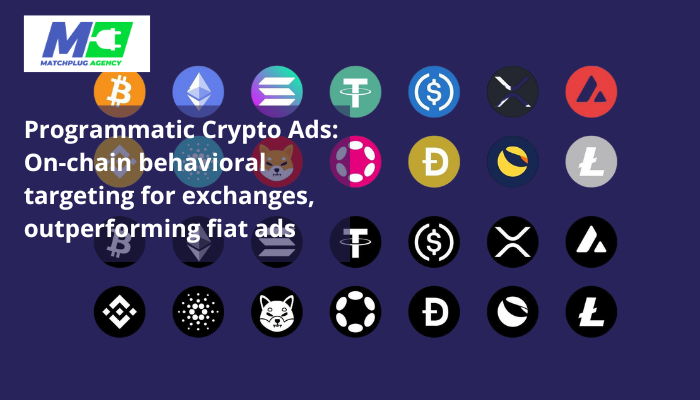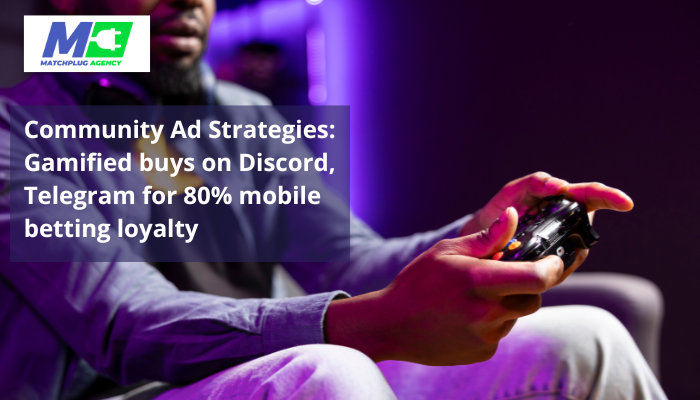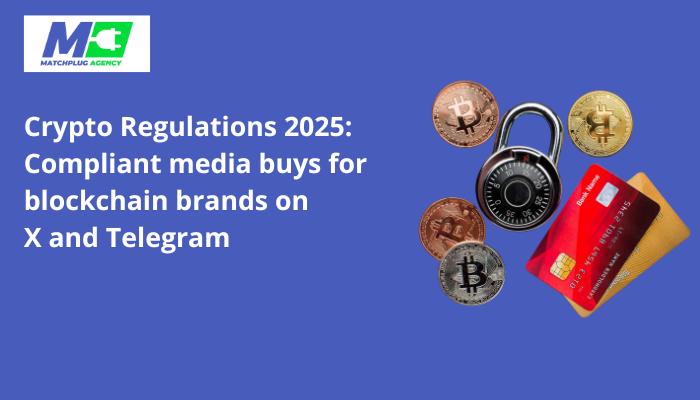As a CMO, you’ve probably come across hundreds of articles online, talking about how to attract and retain iGaming players for your brand. That is good. Targeting players to boost sales, increase gameplay, and raise deposit rates is an integral part of every successful iGaming campaign. However, the majority of articles you see online rarely discuss the trickier part, which is getting leads who previously interacted with your brand to return and take a desired action on your platform.
Retargeting is a tricky part of managing an iGaming brand as a CMO, because, unlike core targeting, it involves a lot of processes; one of which is figuring out why players abandoned ship at the awareness or consideration stage of their customer journey, and how to lead them to the decision stage where they now open an account and make that first deposit. This is an area every CMO who knows their onus should master: how to fire up cold trails and bring leads back to your brand as long-term customers.
In this article, MatchPlugAgency will break down the entire process of retargeting iGaming players with Meta Ads, common reasons why leads don’t make it to the decision stage, player psychology, and strategies to boost deposits.
Common Reasons Why iGaming Players Don’t Make Deposits
Before you can boost deposits for your iGaming brand, you first have to understand why players aren’t depositing funds in the first place. There are many reasons why this might happen, and we’ll discuss them here.
1. Misleading Bonuses
Most iGaming brands often use bonuses to attract players, but the terms and conditions surrounding them aren’t always straightforward. If you promise players unlimited boosts and deals for registering, but the bonus terms are confusing or misleading, they might end up getting frustrated and leaving your platform entirely.
2. Trust
Gambling has evolved to be more ethical and favourable to the players. Yes, they know loss and risks are inevitable, but that doesn’t mean that brands should continue to uphold the “the house always wins notion. If you’re going to invite players to play on your platform, then you must be upfront about everything they should expect.
Lay out the requirements for participation, keep things fair, maintain safe gambling practices, and ALWAYS tell new players what they are getting into, so they don’t find out the hard way. Highlighting your terms is a great way to build trust and ultimately drive conversions.
3. Terrible UI/UX
In addition to being clear about bonus terms and building trust, you must also not overlook the possibility that your website’s UX might be the reason leads bounce at the first click. Before you start planning your retargeting campaign, take a moment to test out your landing page and other pages on your site to see how potential customers will interact with them.
Test the buttons, click on links, and try signing up and depositing funds with a user account to ensure these steps aren’t too complicated. Also, test out incentives like free spins and watch for how long it’ll take players to access those bonuses. A complex website will cause people to lose interest, while one that is easy to navigate makes conversion seamless.
6 Ways To Boost Deposits From iGaming Players
Now that we have discussed some of the reasons why players aren’t depositing funds on your platform, let’s talk about the ways you can boost deposits as a CMO.
1. Make The Experience Thrilling
Getting users to deposit funds for the first time is all about building excitement around a specific experience. iGaming players are natural thrillseekers who play for the possibility of a win, so if you can tap into that part of their brain that wants to win so badly, you can get them to fund their wallets the second they click on your platform.
2. Make Players Wait
Introduce bigger bonuses such as massive jackpots, exclusive bonuses, and limited-time offers to first-time visitors. Tie these incentives to your most popular games, and tell users they can only unlock them by signing up.
You could also set a countdown timer for a special offer that players can access in a day or two. If you’ve built a loyal customer base that you’ve done well to give the best games, deal with fairly, and have transparent processes, then getting them to wait for offers shouldn’t be hard for you. While these leads wait, you can use free spins or sign-up bonuses as a lead magnet.
3. Offer Irresistible Bonuses To New Players
New players visiting your site for the first time want the thrill of playing games, but they don’t want to lose money, which is understandable and smart. For this category of players, you can offer the low-risk rewards such as match deposit bonuses, free spins, sign-on amount (get $2 to kickstart your betting), and no-wagering bonuses.
These types of offers allow newbies to join in on the fun without risking all their money or getting hooked on winning back the amount they lost. As they grow through your website, they’ll master how to manage their funds and know when to stop playing for the day.
Below, we examine some of the common bonuses you can offer new iGaming players:
Match Deposit Bonuses
Providing match deposit bonuses doubles a player’s first stake, which is a good motivator to spur first-time players who might not want to deposit a bigger sum the first time they sign up.
Free Spins
With free spins, newbies can spin the wheel without losing their money. This deposit lets them get a feel of how a game works and the potential rewards. The more they spin, the more comfortable they get with the platform, and their possibility of depositing money increases.
To make this safer and less addictive, ensure your platform has a limited number of free spins, so that when the user exhausts them, they cannot spin again till after a long while later. New bettors don’t know better, and casinos often take advantage of that by flooding them with bonuses and making it difficult for them to say no. To avoid this, put a cap on how much they can put into their wallets and how much they can bet on in a day or even a month.
No-wagering Bonuses
No-wagering bonuses involve allowing players to keep their earnings without going through complex processes to do so. This type of bonus makes betting easier and more welcoming for new players.
4. Mobile Optimization
Optimizing your website for mobile is a must for every iGaming brand that truly wants to make gaming seamless and accessible across devices. A mobile-friendly site eliminates a lot of barriers that lead to frustration at the first click and makes playing on your platform seamless.
If users can deposit and interact with other elements on your website without a hitch, they can complete that first deposit and come back to keep playing. The faster and easier your site is, the higher the chances of them sticking around.
5. Use Compelling Call To Actions
Use call-to-actions to take leads to the final stage of your brand’s customer journey by making them as clear and compelling as possible. If you are using a dedicated landing page for your Meta Ads, ensure it has only one clear call to action, so that leads aren’t confused on what you want them to do next.
Some good examples of CTAs that speed up the process without being predatory are:
- Sign up now.
- Claim your sign-up bonus.
- Try a demo.
Retargeting and Audience Segmentation With Meta Ads: What is Retargeting?
Before we dive deeper into retargeting and its principles, let’s do a bit of a refresher on the definition of retargeting. Remember, this principle is for users who clicked on your ads or visited your website previously.
What is Retargeting?
Retargeting (AKA remarketing) is a type of online advertising that targets users who previously interacted with your website, app, or campaign by either visiting a page, adding items to a cart and not checking it out, or watching a video. This form of advertising engages leads who you couldn’t convert on your first visit by showing them tailored ads to nudge them to return.
Audience Segmentation
Audience segmentation is a crucial part of retargeting iGaming players, and Meta Ads has tools in place that streamline this process for CMOs. In this segment, we’ll look at two areas of audience segmentation – categorizing players based on their preferences and building custom and lookalike audiences.
iGaming Player Categorization
There are different categories of iGaming players, which you, as a CMO, can segment based on their preferences, level of experience, engagement patterns, and spending habits. Knowing these things makes it easier for you to create an effective Meta campaign that is relevant to your target audience’s needs and addresses their pain points.
So, what type of player categories should you use?
1. Spending Players
This group of players is willing to splurge on in-app purchases that give them an advantage in a game. These items include new character skins, potions, weapons, boosts, coins, or extra lives.
2. Casual Players
Casual gamers take a lighter approach toward gaming and often go for easier, less demanding games that can be finished within minutes. They’ll love free games, demos, and samples, and are less likely to spend on gameplay.
3. Core Players
This type of player can invest time and money into complex games, with competitive elements like leaderboard scores, groups, and contests. They like games with long-term progression.
4. Genre-Specific Players
Genre-specific players exclusively play strategy games like Call of Duty, puzzle games, or racing games.
Meta’s Custom and Lookalike Audiences for Retargeting iGaming Players
Usually, Meta Ads has two types of audience segments that you can create for your iGaming campaigns. If you have players who are just interested in buying extra skins, you can create a lookalike audience based on this category of players. Meta can then identify users who have the same interests, behaviours, and demographics who would find your ad relevant.
Let’s explain both groups further:
1. Lookalike Audiences
Lookalike audiences are made up of individuals who share the same characteristics as your existing customers. Using this setting allows you to expand your campaign’s reach to target new players who are most likely to enjoy your game.
2. Custom Audiences
Custom audiences are built using your existing user data. You can create them based on your app users, email subscribers, and website visitors.
How to Create Effective Meta Ads Campaigns
There are several ways iGaming CMOs can make their Meta Ads campaign effective. One of them is optimizing your campaigns for mobile users, and another is using Meta’s Advantage+ Campaign budget, which allocates your budget across various campaign objectives.
In this section, we’ll dive deeper into optimizing your mobile campaign.
1. Make Short Videos
Ideally, your Meta Ads videos should be 15 seconds long, which is short enough to engage users with a short attention span. Make it captivating and get your message across in those 15 seconds.
2. Mobile-Friendly Creative
Your ad creative should be designed for mobile users, as most players will be viewing the ad on their phones. Use high-resolution images and videos that look good on small screens.
3. Local Targeting
If your game has a wide local player base, try targeting users in those specific locations. However, before you do that, ensure the country doesn’t have a ban on gambling and gaming ads.
4. App Store Integration
If your campaign objective is app installs, then direct users straight to the Play Store or App Store from your ads. This makes the download process easy.
5. Device Targeting
Identify and target users with specific mobile devices based on your game’s compatibility.
Optimizing Your Marketing Funnel for Deposits: What to Know
To optimize your sales marketing funnel as a CMO, you need to create a seamless user experience and constantly test which strategies are working or not. Here are the other steps below:
1. Study Data
Studying performance metrics and analytics is a great way to understand how players relate to your campaigns, find out what’s working, and know what can be improved. Once you have this data, you can use it to improve player experience. And the closer you look, the more you start identifying patterns and trends that help you make insight-driven decisions that keep your strategies precise.
2. Build A Good Landing Page
Online visitors are wary and require enough convincing before they can deposit funds on your platform. To make this process easier for both you and them, use your landing page to cultivate trust by adding elements like reviews from past players, security badges, and licenses. Make it easy to navigate and add a text that explains what happens to user information, so that players understand what they are signing up for.
3. A/B Test
A/B testing gives CMOs the chance to run two different ads side by side with different settings and target audiences, so that they can accurately measure which strategies are working and which ones should be scrapped or improved. There’s so much you can test, starting from bonuses, landing pages, CTAs, and Ad copy.
By watching both ads on Meta, you can understand which one your target audience interacts with the most and also find out which type of people engaged with your ad the most.
How to Measure Success and Optimization
Knowing the right metrics to track is essential for CMOs who want to enhance the effectiveness of their Meta Ads campaigns. Don’t just track impressions and clicks, monitor these things too:
1. Lifetime Value
This is the predicted revenue a player will generate over their whole engagement with your game.
2. Average Revenue Per User
The average amount of revenue generated per player.
3. Cost Per Install
The overall cost of acquiring a new player.
4. Retention Rate
The percentage of players who keep playing your game after a specific period.









